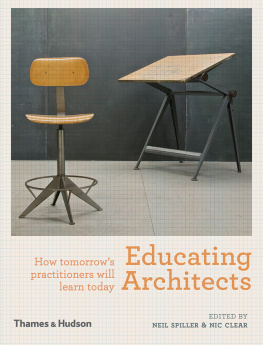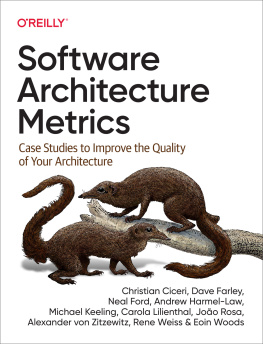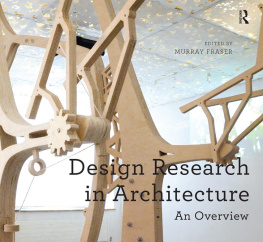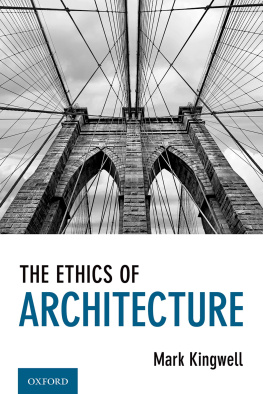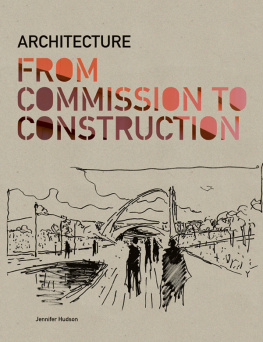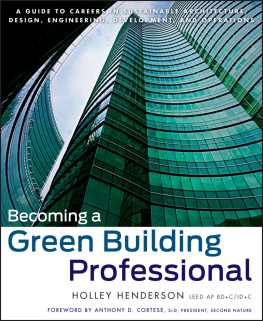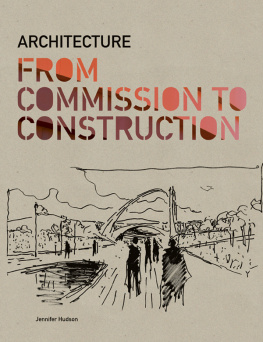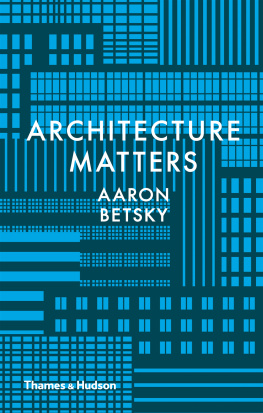I would like to thank Rahesh Ram for having the initial idea for this book. Nic Clear, Simon Herron and Mark Garcia for helping hone the choice of schools and the content of the book. Lucas Dietrich and Thames & Hudson for publishing such a fine and important book. Caroline Ellerby for collating, copy-editing and project managing the book I couldnt have done it without her. Gratitude is also due to the University of Greenwich for providing a new architecture school building by award-winning architects, financial support for this project, and the opportunity to create a world-class school.
I dedicate this book to my two sons Edward and Tom, and to all the people featured in this book, teacher or student. It has been your day-to-day toil and victories that have made this book possible.
Neil Spiller
Contents
INTRODUCTION
Neil Spiller, University of Greenwich
Sir Peter Cook, Bartlett School of Architecture, University of London, and CRAB Studio
Michael Sorkin, City College of New York and Michael Sorkin Studio
Peter L. Wilson, Bolles + Wilson
Brett Steele, Architectural Association School of Architecture
Nic Clear, University of Greenwich
Mike Aling and Mark Garcia, University of Greenwich
BUILDING ARCHITECTURE LEARNING
Rosn Heneghan and Shih-Fu Peng, Heneghan Peng Architects
Neil Spiller, University of Greenwich
Neil Spiller, University of Greenwich
Nic Clear, University of Greenwich
Nic Clear, University of Greenwich
Simon Herron, University of Greenwich
Simon Herron and Susanne Isa, University of Greenwich
Ed Wall, University of Greenwich
Bob Sheil, Bartlett School of Architecture, University College London
C. J. Lim, Bartlett School of Architecture, University College London
Nigel Coates, Royal College of Art
Mark Morris, Cornell University
BUILDING ARCHITECTURE LEARNING
OMA
Evan Douglis, Rensselaer Polytechnic Institute
Mohsen Mostafavi, Graduate School of Design, Harvard University
BUILDING ARCHITECTURE LEARNING
OMA
Perry Kulper, University of Michigan
Nanako Umemoto and Jesse Reiser, Reiser + Umemoto/RUR Architecture
Mark Wigley, Columbia University
Anthony Vidler, Cooper Union
Ben Nicholson, School of the Art Institute of Chicago
Neil Denari, University of California, Los Angeles
Greg Lynn, University of California, Los Angeles
Eric Owen Moss, Southern California Institute of Architecture
Hernan Diaz Alonso, Southern California Institute of Architecture
Salomon Frausto, Berlage Center for Advanced Studies in Architecture and Urban Design, Delft University of Technology
Klaus Bollinger and Reiner Zettl, University of Applied Arts Vienna
Hani Rashid, University of Applied Arts Vienna
Zaha Hadid and Patrik Schumacher, Zaha Hadid Architects
BUILDING ARCHITECTURE LEARNING
Wolfgang Tschapeller, Wolfgang Tschapeller ZT GmBH
Kongjian Yu, Peking University
Li Xiaodong, Tsinghua University
BUILDING ARCHITECTURE LEARNING
Will Alsop, ALL Design
Mark Burry, Spatial Information Architecture Laboratory, RMIT University
Mike Aling Will Alsop
Klaus Bollinger Mark Burry
Nic Clear Nigel Coates
Sir Peter Cook Neil Denari
Hernan Diaz Alonso Evan Douglis
Salomon Frausto Mark Garcia
Zaha Hadid Heneghan Peng Architects
Simon Herron Susanne Isa
Perry Kulper C. J. Lim
Greg Lynn Mark Morris
Eric Owen Moss Mohsen Mostafavi
Ben Nicholson OMA
Hani Rashid Jesse Reiser
Patrik Schumacher Bob Sheil
Michael Sorkin Neil Spiller
Brett Steele Wolfgang Tschapeller
Nanako Umemoto Anthony Vidler
Ed Wall Mark Wigley
Peter L. Wilson Li Xiaodong
Kongjian Yu Reiner Zett
EDITED BY
NEIL SPILLER & NIC CLEAR
Featuring the worlds leading architectural educators and contemporary practitioners.
Other titles of interest published by
Thames & Hudson include:
Architecture: A Modern View
Building for Tomorrow:
Visionary Architecture from Around the World
Digital Architecture Now
by Neil Spiller
Elements of Modern Architecture
Material Innovation: Architecture
Visionary Architecture: Blueprints of the Modern Imagination
by Neil Spiller
See our websites
www.thamesandhudson.com
www.thamesandhudsonusa.com

Olia Fomina, Frederico Fialho, Daniel Hambleton, Christoffer Marsvik, Ana Garcia Puyol, Varvara Toulkeridou, Ben Schneiderman, Sarah Goldfarb and James Wisniewski, Manta. Smart Geometry 2012 Studio (tutors: Guillermo Bernal, Eric Ameres, Zackery Belanger, Seth Edwards), School of Architecture, Rensselaer Polytechnic Institute, 2012
INTRODUCTION
Neil Spiller, Hawksmoor Chair of Architecture and Landscape and Deputy Pro Vice Chancellor, University of Greenwich
This book is about something very valuable indeed. Architectural education is a delicate ecology, but thankfully it is in the hands of deans and directors (call them what you will) who vigorously defend its integrity, right to exist, outputs and students from the vicissitudes and strange economies of academia. These defenders of the faith (many of the most renowned and vivacious are featured in this book) are highly dexterous, often excellent lecturers and public engagers, but above all they are mentors to generations of students who are empowered to go out into the world and change it for the good.
Good architectural education should have the exploration and indulgence of the art school, the technical and pragmatic considerations of the scientific lab, the lawyers chambers and the builders hut. Striking this combination of ambiences is very hard; finding the staff to deliver it is equally taxing. We live in a time of eclectic paradox and extreme simultaneities, where very little seems to make sense in relation to economics, politics, social divides, global warming, carbon footprints and human interaction. Yet despite the sophisms of the everyday, we are simultaneously becoming aware of our effect on the world, the limitations of the old bulk-manufactured materials and our integral interrelationship with all things. In recent years, architectural education has been presented with numerous creative opportunities to reconsider itself. These include the great tsunami of technology that has affected how we work, what we work on, what it is made of and when we work on it. Materials are changing, models of composite or soft materials have been developed, and this arena continues to expand.
The emergence of digital fabrication techniques will, of course, change how our architectures are built, composed and procured. The old dichotomies between buildings and landscapes are being eroded, and all terrains are now seen as mutually ecologically synergetic. We bask in the virtual sun and we can pluck digital fruits from the air. The virtual and the actual are synthesized into a new, ever-growing, smart computational ambience (good or bad). All this, and much more, has brought about the need to discuss, compare and contrast many aspects of architectural education: the buildings it is taught in, the international teaching methodologies employed, the technologies utilized and the histories, theories and futures applied to it, as well as which institutions and people are recognizing the changes, embracing them, baulking at them and subverting them.

